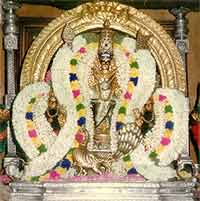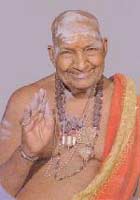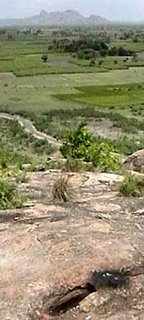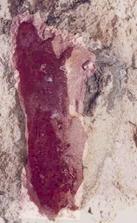Skanda Puranaa...

Maya is born to Asurendran and Mangala Kesi.

 Maya maries sage Kasyapa
Maya maries sage Kasyapa 
The birth of Churapatuman
 Maya and sage Kasyapa take the form of lions and give birth to Singhamukhan , the lion-faced brother of Churapatuman.
Maya and sage Kasyapa take the form of lions and give birth to Singhamukhan , the lion-faced brother of Churapatuman. 
Maya and sage Kasyapa take the form of elephants and give birth to Tarakasuran , the elephant-faced brother of Churapatuman.
 Maya and sage Kasyapa take the form of goats and give birth to Ajamukhi, the goat-headed sister of Churapatuman.
Maya and sage Kasyapa take the form of goats and give birth to Ajamukhi, the goat-headed sister of Churapatuman.  Six sparks appear from Lord Siva's third eye and land in Saravana Poykai (a marshy lake in Himalaya).
Six sparks appear from Lord Siva's third eye and land in Saravana Poykai (a marshy lake in Himalaya). 
 Lord Murugan, using His mighty Vel, splits the tree and one half transforms as a peacock and the other as a cock
Lord Murugan, using His mighty Vel, splits the tree and one half transforms as a peacock and the other as a cock Lord Indra presents the hand of His daughter Devasenu (Teyvanai) in marriage to Lord Murugan, who ended the sufferings of the devas. The marriage takes place at Tirupparankundram
Lord Indra presents the hand of His daughter Devasenu (Teyvanai) in marriage to Lord Murugan, who ended the sufferings of the devas. The marriage takes place at Tirupparankundram Lord Murugan sheds His divine grace upon Sri Lakshmi, Kamadhenu (the fabled cow which supplies every want in the world of Gods), Surya (Lord Sun), Bhumi Devi (Mother Earth), and Agni (Lord of fire), at Tiruvavinankudi.
Lord Murugan sheds His divine grace upon Sri Lakshmi, Kamadhenu (the fabled cow which supplies every want in the world of Gods), Surya (Lord Sun), Bhumi Devi (Mother Earth), and Agni (Lord of fire), at Tiruvavinankudi. 
Lord Murugan explains the meaning of the pranava mantra ('OM'), to His Father, Lord Siva, at Tiruverakam (Swamimalai

































